Build Design Systems With Penpot Components
Penpot's new component system for building scalable design systems, emphasizing designer-developer collaboration.

medium bookmark / Raindrop.io |
British Designer & In-House Design Lead based in Newport Beach, CA. President, AIGA Orange County.
Aug 8
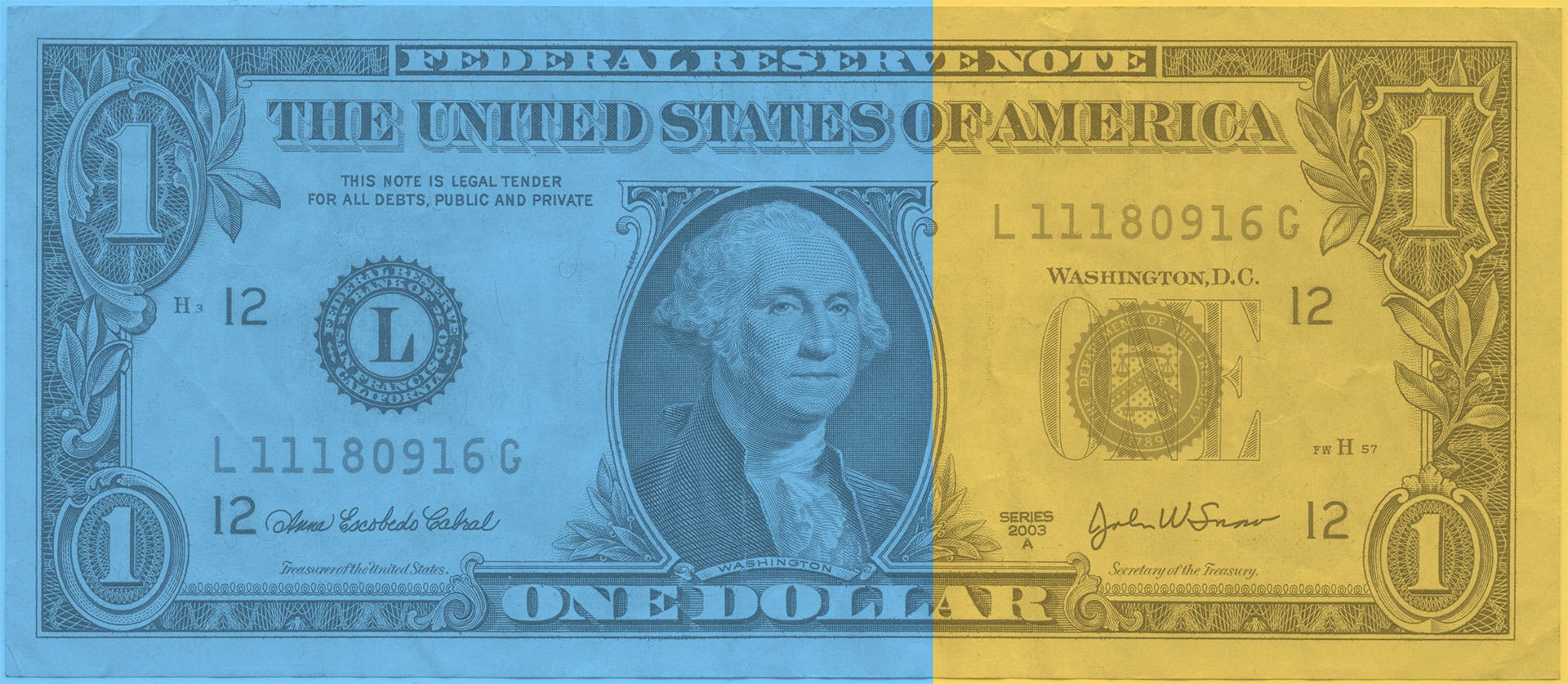
[Note C]
The gender pay gap is neither conspiracy nor secret. The latest statistics from the US Census Bureau observe that in 2015, women in the U.S. earned 80% of what men earned. Although some reporting has explored the social factors that might contribute to the gap, the reality is that bias and discrimination play a significant role.
But how prevalent is this gap within the Design industry? To jump straight to the conclusion…it’s identical to U.S. national averages. Of those who participated in the 2016 AIGA x Google Design Census, on average, for every dollar earned by a man, a woman earns 81 cents.
The following is a breakdown of the U.S. data:
Figure 1. Women are the most represented gender in the design census data. [Note A]

Figure 2. Of those who participated in the 2016 design census, there are 31% more women in the first 10 years of their careers than there are men.

Figure 3. Of those who participated in the 2016 design census, there are 29% more women under the age of 35 than there are men.

Figure 4. Despite being the majority gender in the 2016 census data, female designers experience unequal pay compared to male designers.
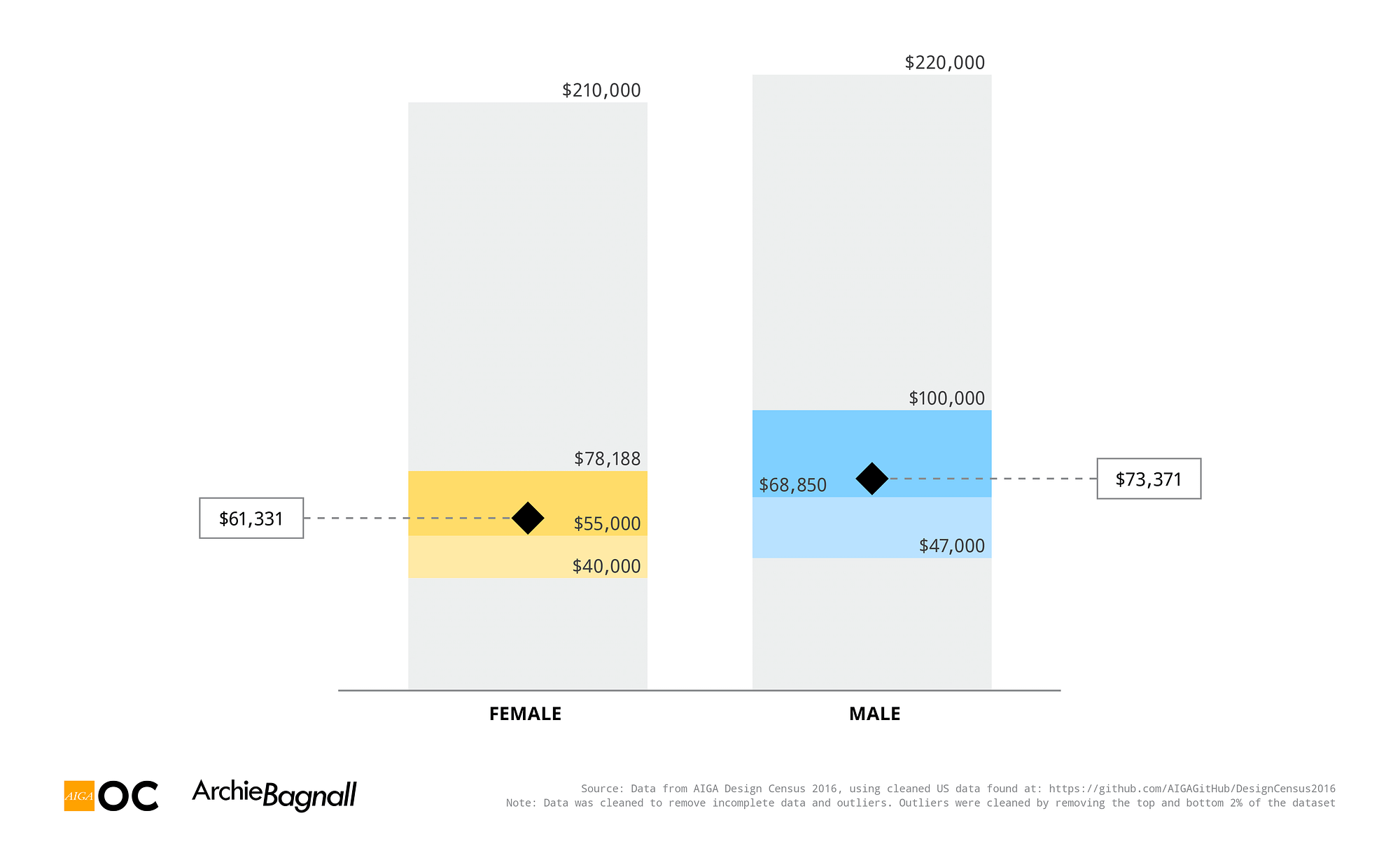
This boxplot breaks the complete U.S. dataset into quarters. It makes it possible to observe statements such as:
Or:
The black diamonds mark the average annual salary of all census participants who identified as female or male.
On average, for every $1 earned by a man, a woman earns 81¢
It’s important to replicate the existence of a pay gap against other design census categories. Doing so confirms that the gap is real, and not simply a misinterpretation or bi-product of bad data. For example: If all participating men were more than 10 years into their careers, and all participating women were fewer than 10 years into their careers, the data would present a false pay gap.
Figure 5. In the categories of years worked and age, there is an almost identical trend of men earning a higher average annual salary than women. [Note B]
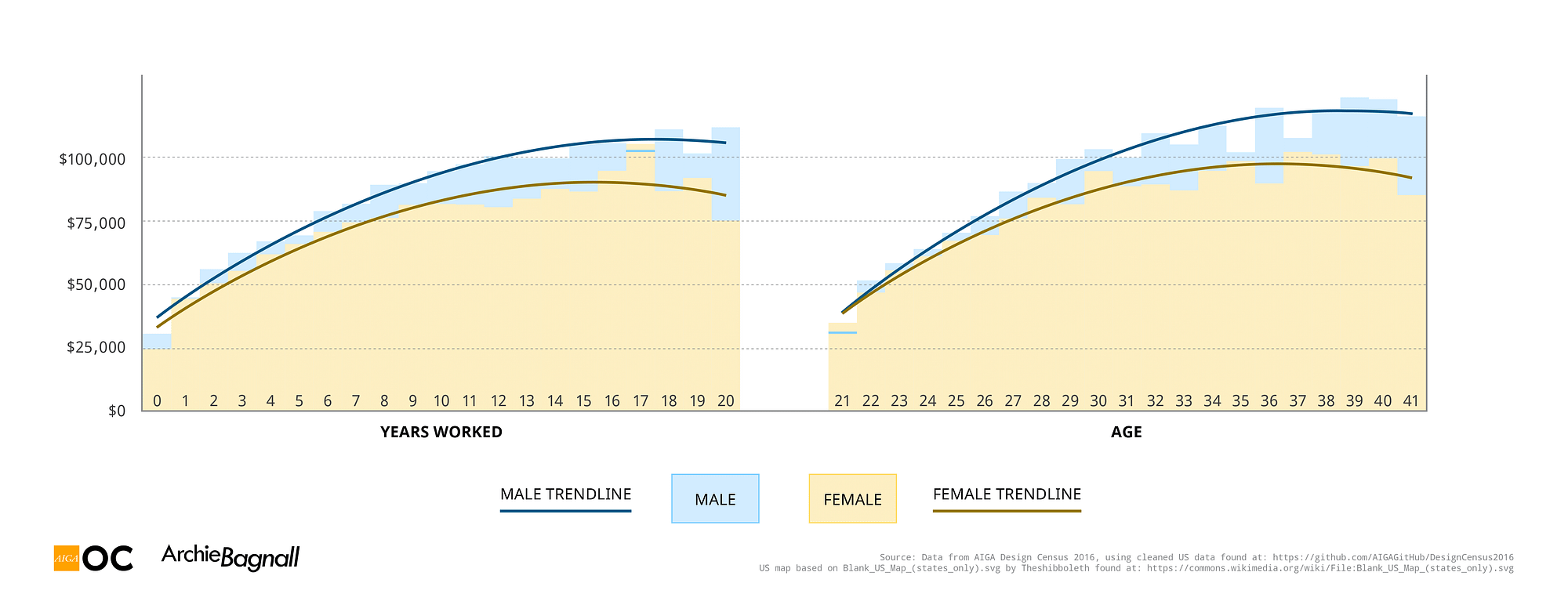
The uncanny closeness these trendlines have to each other is strong evidence of a gender pay gap problem in design.
Although data can show us that a pay gap exists, the fact that bias plays such a significant role in the issue of gender equity means it can’t easily tell us why the gap exists. Furthermore, data is also ill-equipped to tell us how we should respond.
Here, with their insights, are some leading female voices in design who have kindly contributed to this piece. They were asked to share their thoughts on how designers (of all genders) can begin to practically respond to this information:
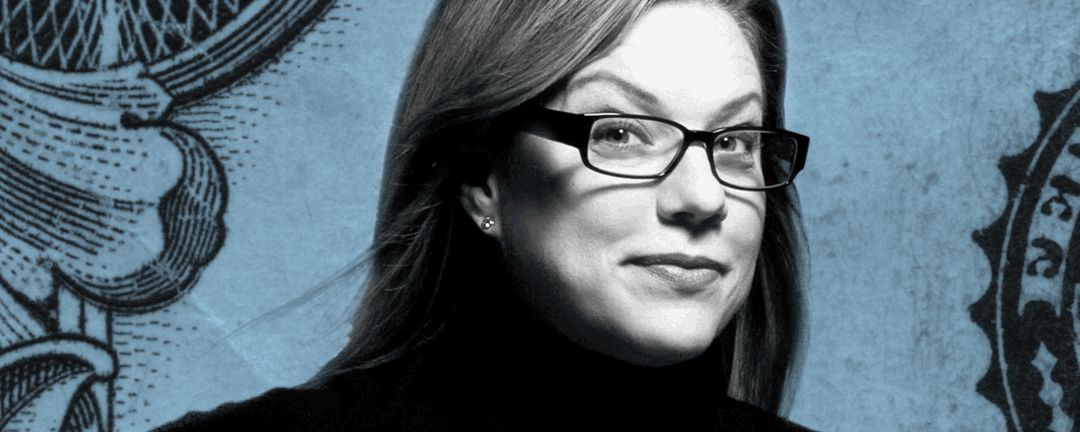
[Note C]
“I applaud what the American Association of University Women (AAUW) recommends:
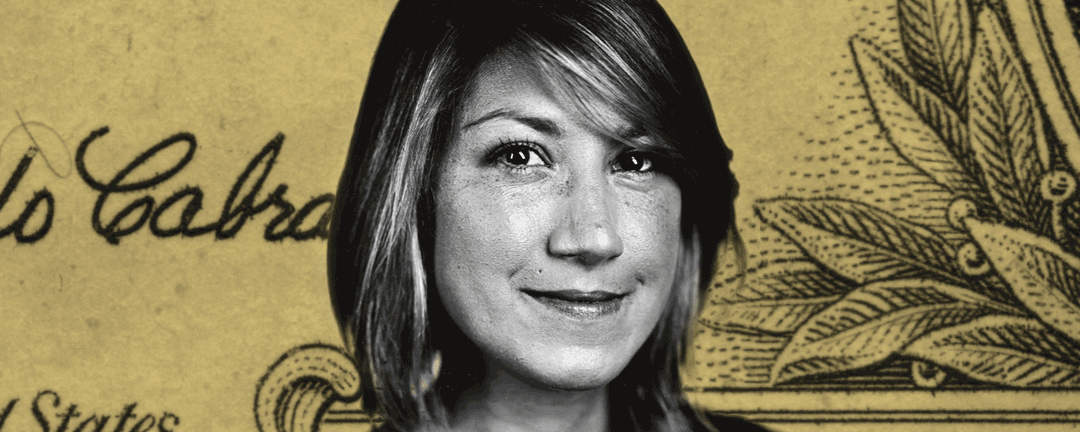
[Note C]
“The response to the gender pay gap has to happen from a few angles:
WILLOUGHBY DESIGN:
ANN WILLOUGHBY, MEGAN STEPHENS, & ZACK SHUBKAGEL

[Note C]
“Pay inequity is like the canary in the coal mine because it quantifies and symbolizes the underlying bias and discrimination that continues to plague the modern workplace. Research shows that when there is gender balance on boards and in the executive teams, there is more balance throughout the entire organization. That said, until decision makers are enlightened to the many benefits of equal gender representation at the top or they are pressured to change, the pay gap will continue to exist.
There is a lot of work to be done. In a 2016 study, only 19.7% of board positions were held by women according to a 2020 Women on Boards Gender Diversity Index of Fortune 1000 companies.
https://www.2020wob.com/companies/2020-gender-diversity-index
What can designers do? We think it would be interesting to create an educational campaign and a certification program that acknowledges companies that commit to closing the pay gap.
For example, a group of design leaders supported by AIGA could collaborate to create an index that could be used to measure and report leadership, salary and benefits equality. Companies would be invited to choose to meet the standards, do their reporting and gain the certification. A peer-driven model led by respected design leaders could help the design industry become a role model for other sectors.”
It’s clear from the comments above that closing the gender pay gap is not something we can simply wait for; there are actionable responses that can (and should) be made right away. The design industry has an opportunity to be a leading voice in what gender equity can look like in today’s working world, and to make that a reality it requires all of us to participate.
Huge thanks to Debbie Millman, Jessica Hische, and the team from Willoughby Design (Ann Willoughby, Megan Stephens, and Zack Shubkagel) for their invaluable contributions.
To learn about AIGA’s Women Lead Initiative, visit: http://www.aiga.org/women-lead-initiative
[Note A] The categories of Non-Binary / Third Gender, Prefer to Self Describe, and Prefer Not To Answer amount to only 1.5% of the total clean data. Due to how small this group is they will not be included in the sample set from this point moving forward. It will be important to see how these demographics grow in future years of the design census.
[Note B] As observed in Part 3 of this series, there is not enough data beyond 20-years worked to draw realistic conclusions from. This gives a total of 21-years of usable data when including 0-years worked. To help comparison, a matching 21-year time-period was chosen for the category of Age: 21–41.
[Note C] Background Image Source: https://upload.wikimedia.org/wikipedia/commons/7/7b/United_States_one_dollar_bill,_obverse.jpg
Archie Bagnall is a British Designer and In-House Design Lead based in Southern California, and is the current President of AIGA Orange County.
You can visit his website here: http://archiebagnall.co.uk/
Or subscribe to his infrequent newsletter here: http://eepurl.com/ckWBIT
AI-driven updates, curated by humans and hand-edited for the Prototypr community